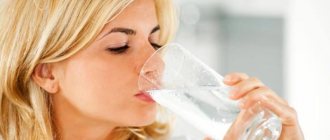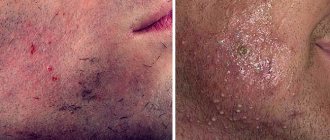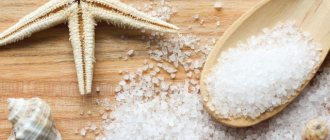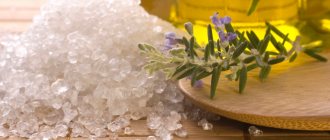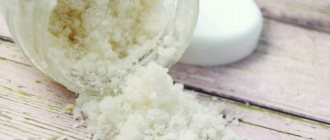- September 27, 2019
- Other states
- Natalia Kalinichenko
Every person faces the problem of swelling sooner or later. If we are talking about the legs, then in addition to swelling, heaviness and aching discomfort in the lower extremities are disturbing. Naturally, the question arises, how to get rid of swelling?
And there are many reasons for this condition. This may include standing for a long time, too high an atmospheric temperature, or consuming large amounts of liquid or alcohol.
Possible reasons
Any swelling occurs due to the inability of the body to process and rid the body of excess fluid as quickly as possible. Typically, water is excreted through capillaries, enters the kidneys and leaves the body. However, if you are worried about high venous pressure or the concentration of proteins or sodium in the body is increased, then edema may appear.
External negative factors include:
- drinking large quantities of drinks and water;
- high salt content in dishes;
- physical activity, including standing for long periods of time;
- uncomfortable high-heeled shoes;
- excess body weight;
- alcoholic drinks;
- climatic features of the region.
Women in an interesting position in their final stages also often face this problem. The cause may be medications or insufficient magnesium in the body. High vascular permeability is also often the cause of swelling.
A number of pathologies lead to unpleasant consequences. In particular, problems with blood vessels and heart, thyroid disease, diabetes, metabolic disorders and liver and kidney diseases.
If the cause is unknown, the swelling itself is asymmetrical, and does not go away after rest, then you will have to consult a doctor. In other cases, you can help yourself at home.
Ways to reduce swelling in your hands
How to deal with swelling at home if you are afraid to look at your own face in the mirror every morning? In some cases, swelling of the facial tissues changes a person beyond recognition, making the eyes narrow and the cheeks and nose large.
- Two hours before bedtime, stop drinking any liquids, even plain water.
- Avoid foods high in salt. Completely exclude chips, salted nuts and snacks from your diet.
- Three to four hours before bedtime, drink rosehip infusion without adding sugar or other sweeteners or spices.
- After waking up, wipe your face with an ice cube made from herbs: chamomile, nettle, calendula. This method is contraindicated for those who have a tendency to rosacea and people with thin capillary walls.
- During the day, try to reduce the amount of salt in your diet as much as possible. There is no need to completely abandon it; each person needs about 5-6 g of salt to maintain water-salt balance.
The upper limbs often swell due to heart problems or when thyroid hormones are imbalanced. These are quite serious diseases; swelling is one of the earliest precursors to heart problems. You should definitely visit a cardiologist and undergo an examination, not forgetting to mention that your hands often swell.
The basic principles of dealing with swelling of the hands are the same as with other parts of the body. This includes a contrast shower, reducing salt intake, controlling the fluid entering the body, and completely avoiding fast food and alcoholic beverages.
Foot treatments
How to get rid of swelling of the lower extremities? If the problem bothers you on an ongoing basis, then take a contrast shower regularly. Pay great attention to your shins, where they connect to your knees. The veins in these places very often suffer from venous insufficiency, which is the cause of swelling.
You can do the so-called water march. Fill a basin with cold water and march in it. If there is a body of water near your house that allows you to run around it in the sand, then do it. This is an excellent exercise and helps eliminate puffiness. There is an opportunity - visit the pool, it has a hydromassage effect on the entire body.
Be on the wave! Be with us!
Helps!
Edema occurs when our body stores too much fluid, reports Remedy Daily.
Water typically accumulates in the circulatory system, tissues, or cavities and can cause swelling in the hands, feet, ankles, and thighs. This may be a symptom of poor health, such as kidney disease. If sudden and unexplained swelling occurs, we recommend that you consult a doctor immediately.
But swelling can also appear for a number of less dangerous reasons, and in women it occurs regularly, as part of the reproductive cycle. So if you are experiencing minor swelling, try our simple home remedies to combat it.
Eat less salt. Sodium interacts with water in the body to maintain the balance of fluids in and around cells. However, excess salt causes the body to retain more water. If you're sure you're not adding too much salt to your meals, check the ingredients on the snacks you buy—it might shock you! Sodium levels in canned food or chips can be incredibly high.
Exercise regularly! Exercise is important for circulation, otherwise excess pressure in the capillaries can lead to fluid accumulation in the lower extremities. To protect yourself from this, doctors recommend raising your legs up several times a day, and generally doing exercises regularly. Older people and those suffering from varicose veins will also benefit from compression (support) stockings.
Take magnesium. This essential mineral is essential for over 300 processes in the body that keep it functioning properly. Research has shown that consuming magnesium reduces swelling in women with premenstrual syndrome (PMS). Healthy sources of this mineral include almonds, whole grains, green leafy vegetables... and good dark chocolate!
Raise your protein levels. When there is a lack of protein, the body accumulates fluid because it cannot return the water accumulated in the tissues back to the capillaries. This is why people who are hungry often have bloated stomachs.
Try vitamin B6. It is known, again, as an effective means of combating edema in women during PMS. There is a lot of B6 in bananas, potatoes, walnuts, meat, and it can also be taken in tablets.
Take a diuretic. Diuretics help reduce the amount of fluid in the body in the simplest way - urination. They can be taken as medications, but common foods also have a diuretic effect: onions, beans, leafy greens, pineapple, parsley and grapes. Coffee is another quick way to reduce fluid retention, although caffeine has other effects.
Take potassium every day. Potassium is another natural way to increase urination and reduce fluid retention. A good source of potassium is any meat, as well as broccoli, peas, potatoes, milk, yogurt, nuts and a range of fruits.
Try dry brushing. For this you need a natural bristle brush. Dry rubbing is a good way of lymphatic drainage and removing fluids from the body. Massage your entire body with the brush for ten to twenty minutes. If after this you want to urinate, the method worked! As a bonus, you will get soft, glowing skin and improved blood circulation.
Avoid refined (fast) carbohydrates. They cause spikes in blood sugar and insulin, causing your body to store more sodium. We already know the consequence of excess sodium: water accumulation. Refined carbohydrates are primarily refined sugars and processed grains.
Drink more water. Paradoxically, when there is swelling, it is very important to drink water. This will help “flush” excess fluid from the body. To do this, doctors advise drinking water on an empty stomach. So drink two glasses of water every morning before breakfast, and two more before bed. Dinner, by default, should end a few hours before.
Swelling and swelling are unpleasant and unsightly. They can only be eliminated by changing habits and diet. Watch the levels of sodium and refined carbohydrates in your food. There are so many of them in processed foods that you can quietly double your daily intake of these substances.
Drink water and do plenty of exercise. If these simple home remedies don't help, see your doctor and make sure you don't have more serious problems.
Do you have simple everyday tips to improve your well-being? Tell us in the comments!
Healing baths
To eliminate swelling on the legs, it is recommended to take baths with sea salt. For 3 liters of hot water you will need 3 tablespoons of salt and 1 tablespoon of soda. Do the procedure for 20 minutes.
You can take a bath with medicinal herbs, from which a healing decoction is first made. St. John's wort, elderberry, mint and chamomile are suitable for the decoction. Herbs can be added in equal parts. The decoction is mixed with hot water and the feet are immersed in it for 15 minutes.
Pine needles and essential oils are also suitable for these purposes.
How to relieve swelling of the legs at home
Of course, to effectively counteract it, it is better to have a rough idea of the cause of its occurrence.
In most cases, swelling is somehow related to poor nutrition. Although there may be other reasons for the manifestation of the disorder, in most cases changing eating habits gives a good result. You can simply give up obviously harmful foods, or try using special diets designed to reduce the consumption of salts and carbohydrates.
- Those whose difficulties are associated with flat feet or uncomfortable shoes should get suitable shoes to prevent swelling.
- For those who sit a lot in an uncomfortable position, move more and try to avoid positions that are harmful to the body and spine. For this case, as for flat feet, gymnastics will be an effective measure.
There are a number of simple recommendations to help reduce the likelihood of this problem:
- Healthy food. As already mentioned, reducing the amount of salts and various chemicals has a positive effect on reducing swelling.
- Hiking, swimming or properly selected gymnastics are also useful as a preventive measure. You can easily find suitable exercises among the recommendations of traditional medicine or, for example, within the framework of yoga or qigong.
- It is good to sleep in a position in which the feet are located slightly above the head on a special cushion. And just lying down with your legs up and your feet against the wall will slightly reduce the fatigue of your legs.
- Try salt baths. If you don’t have sea salt, you can use regular food-grade stone salt.
- Rubbing with ice cubes or a contrast shower for the problem area are effective. Exposure to cold improves the condition of blood vessels. When using ice, you can enhance the effect by freezing infusions and decoctions of medicinal plants and herbs. For example, yarrow, sage, eucalyptus, montane arnica flowers, peppermint, etc.
- Visiting a bathhouse, sauna or taking a regular bath with salt will help relieve swelling and reduce the amount of excess fluid.
- Lotions and compresses will have a positive effect.
- Massage and the use of massage oils are beneficial. For example, lemon oil strengthens the walls of blood vessels. In the line of body skin care products you will find the Citron phytobiocomplex, the use of which will normalize blood circulation and the outflow of fluid from tissues. Massage as a method has significant limitations for people with venous disorders.
- You may be helped by wearing special knitwear - compression stockings, tights, socks - that will retain fluid in the vascular space.
- One of the methods to combat swelling is diuretics and diuretics. It is better to discuss their use with your doctor. Since incorrect selection, overdose or taking them for too long can lead to a deterioration in well-being.
- But local preparations in the form of ointments and gels are quite effective, both for people without pathologies, as well as for those who have difficulties with veins. Such local medications include: troxevasin, hepatrombin, lyoton gel, aescin, venitan, heparin ointment, venogenepanol, etc.
- Or use cosmetic formulations that do not have the same contraindications and restrictions as medical ones. A good example is Venotonic and Laurel gel from.
Let's consider some folk, medicinal and cosmetic products. Green tea is an excellent natural diuretic. And black and green teas will be equally beneficial with milk. And even plain water with lemon juice will help a little in the fight. To reduce the amount of intercellular fluid, it is recommended to use the following decoctions:
- Lingonberry collection.
- Rose hip decoction.
- Complex diuretic preparations sold in pharmacies.
- Mate.
- Cumin decoction, etc.
Watermelon, melon, cucumbers, viburnum or rowan juice and many other products are also good diuretics.
Baths
- With sea salt. Dissolve one tablespoon of soda and 2-3 tablespoons of salt in three liters of boiling water. Soak your feet in the solution for 20 minutes.
- With medicinal herbs (mint, St. John's wort, chamomile or elderberry). Pour four tablespoons of the mixture with hot water. You need to insist for about half an hour, after which the resulting infusion is poured into a bath, where another 2-3 liters of water are added. Hold your feet for at least 15 minutes.
- With pine needles. To do this, you will need a tablespoon of pine needles and one tablespoon of salt. Pour a liter of boiling water over them and leave for 20-30 minutes. The resulting liquid must be filtered and cooled. Add a spoonful of vinegar to the infusion. The duration of the procedure is 10–15 minutes.
- With essential oils. This procedure will calm your feet after a hard day. Pour water into a bowl. Take a pinch of salt and add the following oils to it: mint (3-4 drops), lemon and eucalyptus 1 drop each.
Compresses
- From cabbage leaves. Large leaves are kneaded and applied to swelling. And secure with a gauze bandage or cling film. This compress can be left overnight or removed after an hour.
- From greenery. It will require dill, parsley and chamomile in equal proportions. Pour boiling water over it and let it brew.
- With flaxseed or vegetable oil. Pour some oil onto a cloth and wrap it around your feet. To avoid staining anything, cover the top with cellophane and wrap it with a warm scarf. Leave the compress overnight.
- With burdock. Place the burdock on the inside, wrap it in gauze and leave overnight.
Salt bath
- Dissolve 300 grams of sea salt or, if you don’t have it, table salt and a pack of soda. It is not recommended to drink two hours before and after taking a bath. Bathing time is 30 minutes. This procedure can be carried out 3 times a week.
To increase the effectiveness of the salt, you can add a few drops of pine, juniper or fennel oil before dissolving.
How to eliminate problems under the eyes using improvised means
Do you need to run to work, but are you afraid to look in the mirror? How to get rid of swelling on the face quickly? The easiest way is to make a compress from venotonic. It could be Ginkor or Troxevasin. You should know that creams and gels produced to eliminate edema are developed on the basis of ointments for veins and hemorrhoids, only they contain slightly less active substances.
The cream is applied to a damp gauze pad and placed on the eye area for 10 minutes. After 10 minutes you will see a miraculous effect. However, it is not recommended to use this method very often.
Problems after drinking alcohol
The best way to get rid of swelling from alcohol is not to overdo it the night before. But if this has already happened, folk remedies can help cope with swelling.
The most common recipe is a lotion made from grated fresh potatoes. It is placed in gauze and on the eye area for 15-20 minutes. If you have medicinal herbs, brew them. Chamomile, calendula or St. John's wort will do. Soak a napkin in the broth and apply it to the eye area. Making tea will do if you don't have any herbs on hand.
An effective way to get rid of swelling in the morning is to treat the swollen skin with ice cubes. This can be regular frozen water or a decoction of medicinal herbs. Cold activates lymphatic flow and accelerates metabolic processes.
Medicinal tinctures
If you are regularly bothered by swelling and do not know how to get rid of swelling on your face, then it is recommended to use tinctures made from natural medicinal herbs. The modern fast-paced lifestyle is not conducive to maintaining beauty and health; it is not always possible to get enough sleep. For these reasons, excess fluid may be retained in the body, and swelling on the face appears in the morning.
The easiest way is to make decoctions from rose hips. They are available and are an effective diuretic. It is recommended to steam the fruits in a thermos and drink the tincture in small portions throughout the day.
How to get rid of edema using folk remedies? Corn silk tincture will help solve this problem. A glass of hot water will require 30 g of dry material. Infuse the product for about 3 hours. Then take 1 tablespoon for 5 days, always after meals.
You can drink horsetail tincture for 2 weeks. Dilute 4 tablespoons of horsetail in about a liter of boiling water and leave for 60 minutes. You should drink the entire mixture in small sips throughout the day.
But you should always remember that all diuretics quickly remove calcium. For this reason, during the course of treatment it is best to take calcium supplements and under no circumstances drink decoctions for too long, no more than 2-3 weeks in a row.
It is best to avoid pharmaceutical chemicals. Indeed, they quickly relieve swelling, but they wash out fluid even from blood vessels, and this poses a risk of blood clots.
The appearance of edema due to endocrine pathologies
Representatives of the fair sex often experience swelling of the face and feet due to menstruation. The second common reason is pregnancy, during which the entire body experiences hormonal changes.
In order to be less bothered by swelling during such a period, women should use traditional medicine. During pregnancy, taking diuretics is prohibited; even before taking homeopathic medicines (“Canephron”), you should consult your doctor. The body of a pregnant woman can react unpredictably to the most harmless drug, so you should take diuretics for edema only if the expected benefit is greater than the possible harm.
With hyperthyroidism, there is a tendency for the patient to gain weight not only due to adipose tissue, but also due to fluid retention in the tissues. In some cases, this becomes a real problem - edema can increase body weight by 2-3 kg. In this case, hormonal drugs such as “Thyroxine” or “Euthirox” do not bring relief, since their action is not aimed at removing accumulated fluid from the body.
Swelling caused by hypothyroidism (myxedema) is dense; when pressed, a hole does not form. The density of edema is due to the deposition of mucopolysaccharides in the subcutaneous tissue, the catabolism of which is sharply reduced. The patients' skin is cool to the touch and has a pale, slightly yellowish color. If myxedema constantly bothers the patient, this issue should be discussed with the treating endocrinologist.
How to deal with leg swelling if it is caused by endocrine pathologies? You should use the traditional medicine tips presented below. In some cases, it is advisable to change your diet and reduce the consumption of salt and spices.
Hand problems
In fact, swelling of the hands alone is extremely rare. Most often, this problem is encountered by people who have kidney problems or are diagnosed with heart failure. Perhaps the person slept in an awkward position, and too much stress was placed on the wrist.
How to get rid of swelling in your hands? To solve this problem, compresses from fresh vegetables are used: beets and potatoes. Vegetables are grated and mixed. The resulting pulp is placed in gauze and applied to swollen hands. It is advisable to wrap the compress with polyethylene. After 20 minutes you can remove it.
Baths with sea salt will help get rid of the problem; they are done in the same way as when relieving swelling on the legs. Do a contrast shower on a regular basis. If possible, visit the bathhouse or sauna at least 2 times a month.

